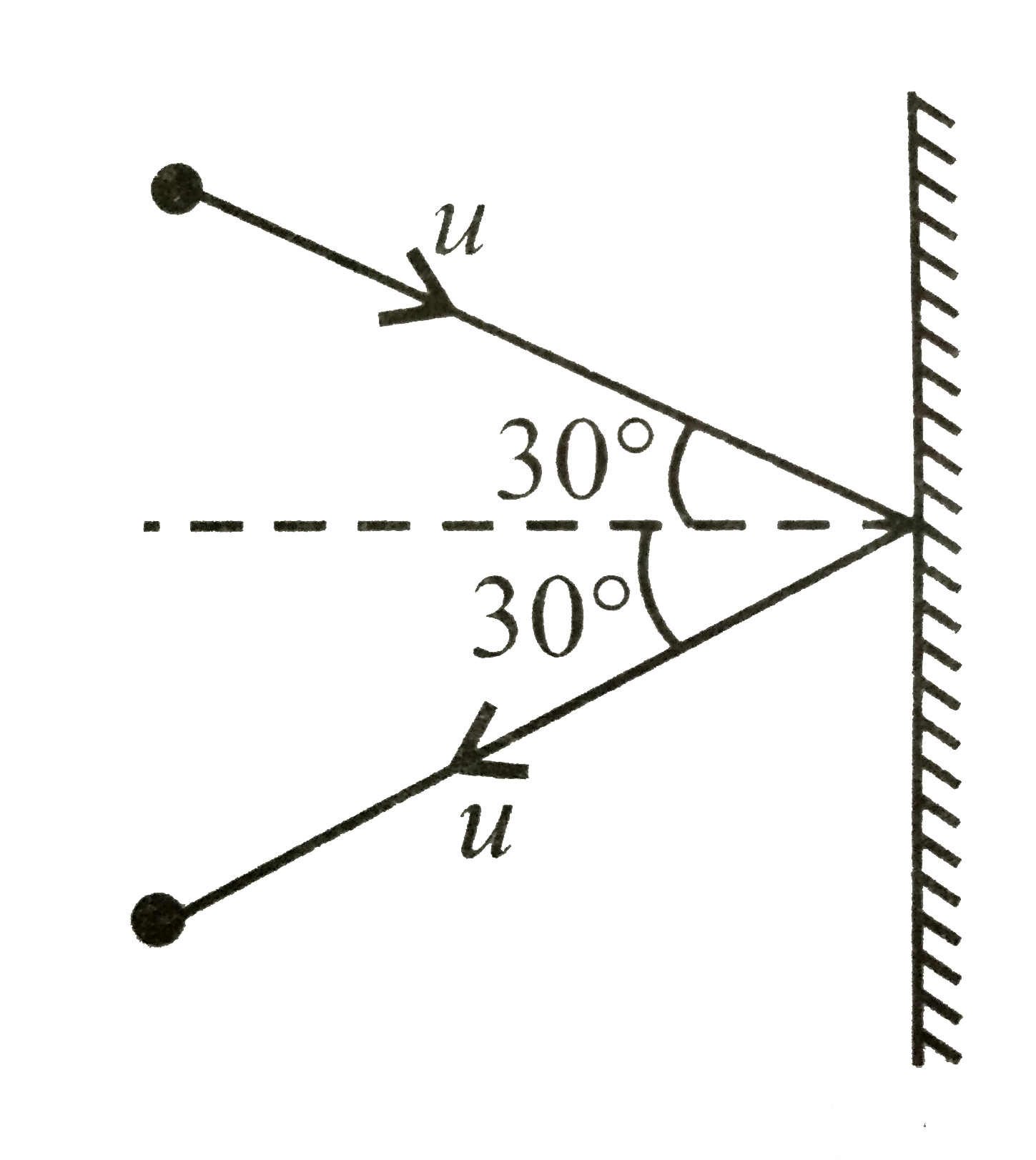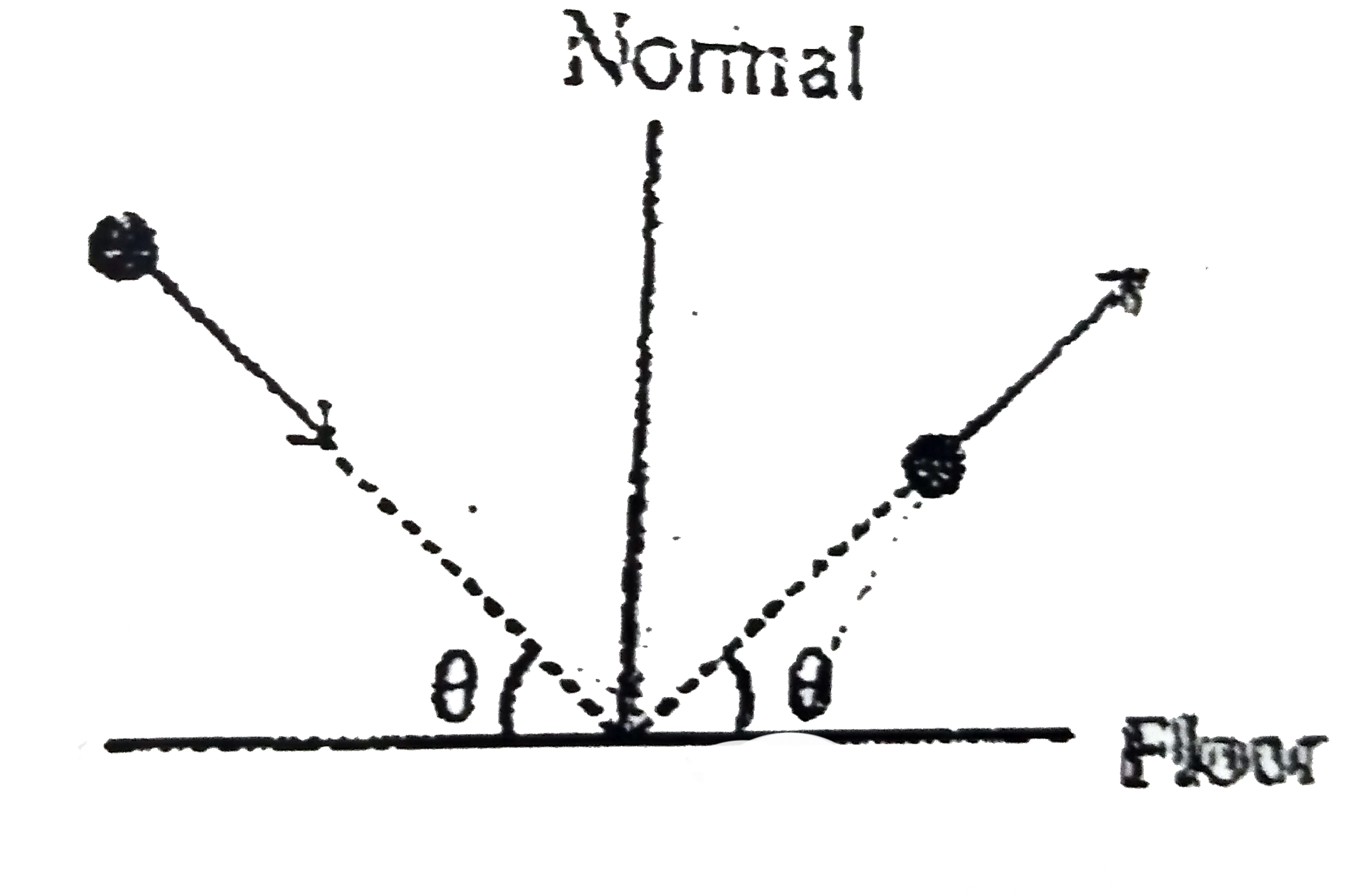A body strikes the floor vertically with a velocity u and rebounds at the same speed. The change inspeed would be
uniform acceleration
3u
2u
zero
The correct Answer is:D
To solve the problem, we need to analyze the motion of the body before and after it strikes the floor.
1. Identify Initial Conditions:
- The body strikes the floor with an initial velocity u (downward).
- We consider downward direction as negative, so we can represent this velocity as −u.
2. Identify Final Conditions:
- After rebounding, the body moves upward with the same speed u.
- Since upward is opposite to the downward direction, we represent this final velocity as +u.
3. Calculate Change in Speed:
- Speed is defined as the magnitude of velocity, which is always positive.
- The initial speed (magnitude of initial velocity) is |u|=u.
- The final speed (magnitude of final velocity) is |u|=u.
- Change in speed is calculated as:
Change in speed=Final speed−Initial speed=u−u=0
4. Conclusion:
- The change in speed of the body is 0.
Summary:
The change in speed when a body strikes the floor with a velocity u and rebounds at the same speed is 0.
---
- The body strikes the floor with an initial velocity u (downward).
- We consider downward direction as negative, so we can represent this velocity as −u.
- After rebounding, the body moves upward with the same speed u.
- Since upward is opposite to the downward direction, we represent this final velocity as +u.
- Speed is defined as the magnitude of velocity, which is always positive.
- The initial speed (magnitude of initial velocity) is |u|=u.
- The final speed (magnitude of final velocity) is |u|=u.
- Change in speed is calculated as:
Change in speed=Final speed−Initial speed=u−u=0
- The change in speed of the body is 0.
The change in speed when a body strikes the floor with a velocity u and rebounds at the same speed is 0.
Topper's Solved these Questions
- MOTIONBOOK - MCGROW HILL PUBLICATIONCHAPTER - MOTIONEXERCISE - HIGHER ORDER THINKING QUESTIONS
48 Videos
- MISCELLANEOUS QUESTIONSBOOK - MCGROW HILL PUBLICATIONCHAPTER - MISCELLANEOUS QUESTIONSEXERCISE - PART-B
99 Videos
- REFLECTION OF LIGHT BOOK - MCGROW HILL PUBLICATIONCHAPTER - REFLECTION OF LIGHT EXERCISE - HIGHER ORDER THINKING QUESTIONS
10 Videos
Similar Questions
A Rubber Ball Rebound
A rubber ball of mass 2.0kg falls to the floor. The ball hits with a speed of 8m/s and rebounds with approximately the same speed. High speed photographs show that the ball is in contact with the floor for 10^-3s. What can we say about the force exerted on the ball by the floor?

View SolutionA ball of mass 'm' strikes a rigid wall with speed 'u' and rebounds with the same speed. The impulse imparted to the ball by the wall is
View Solution
Knowledge Check
A ball of mass 'm' moves normal to a wall with a velocity 'u' and rebounds with the same speed. The change in momentum of the ball during the rebounding is
A2mu towards the wallB2mu away from the wallCzeroDmu away from the wallA body of mass m collides against a wall with the velocity v and rebounds with the same speed. Its magnitude of change of momentum is
A2mu towards the wallB2mu away from the wallCzeroDmu away from the wallA body of mass ‘M’ collides against a wall with a velocity v and retraces its path with the same speed. The change in momentum is (take initial direction of velocity as positive)
AZeroB2 MvCMvD−2Mv
A ball of mass m strikes a rigid walJ with speed u and rebounds with the same speed. The impulse imparted to the ball by the wall is
View SolutionA ball of mass m strikes a rigid walJ with speed u and rebounds with the same speed. The impulse imparted to the ball by the wall is

View SolutionA body of mass m collides against a wall with the velocity v and rebounds with the same speed. Its magnitude of change of momentum is
View SolutionA body of mass ‘M’ collides against a wall with a velocity v and retraces its path with the same speed. The change in momentum is (take initial direction of velocity as positive)
View SolutionA 2 kg abl collides with the floor at an angle θ and rebounds at the same3 angle and speed as shown below. Which of the following vectors represents the impulse exerted on the ball by the floor?

View Solution
